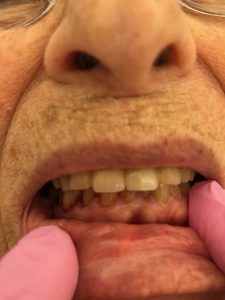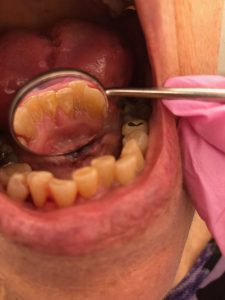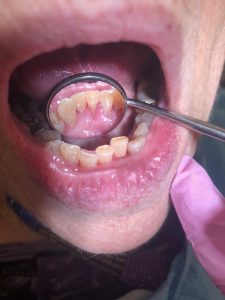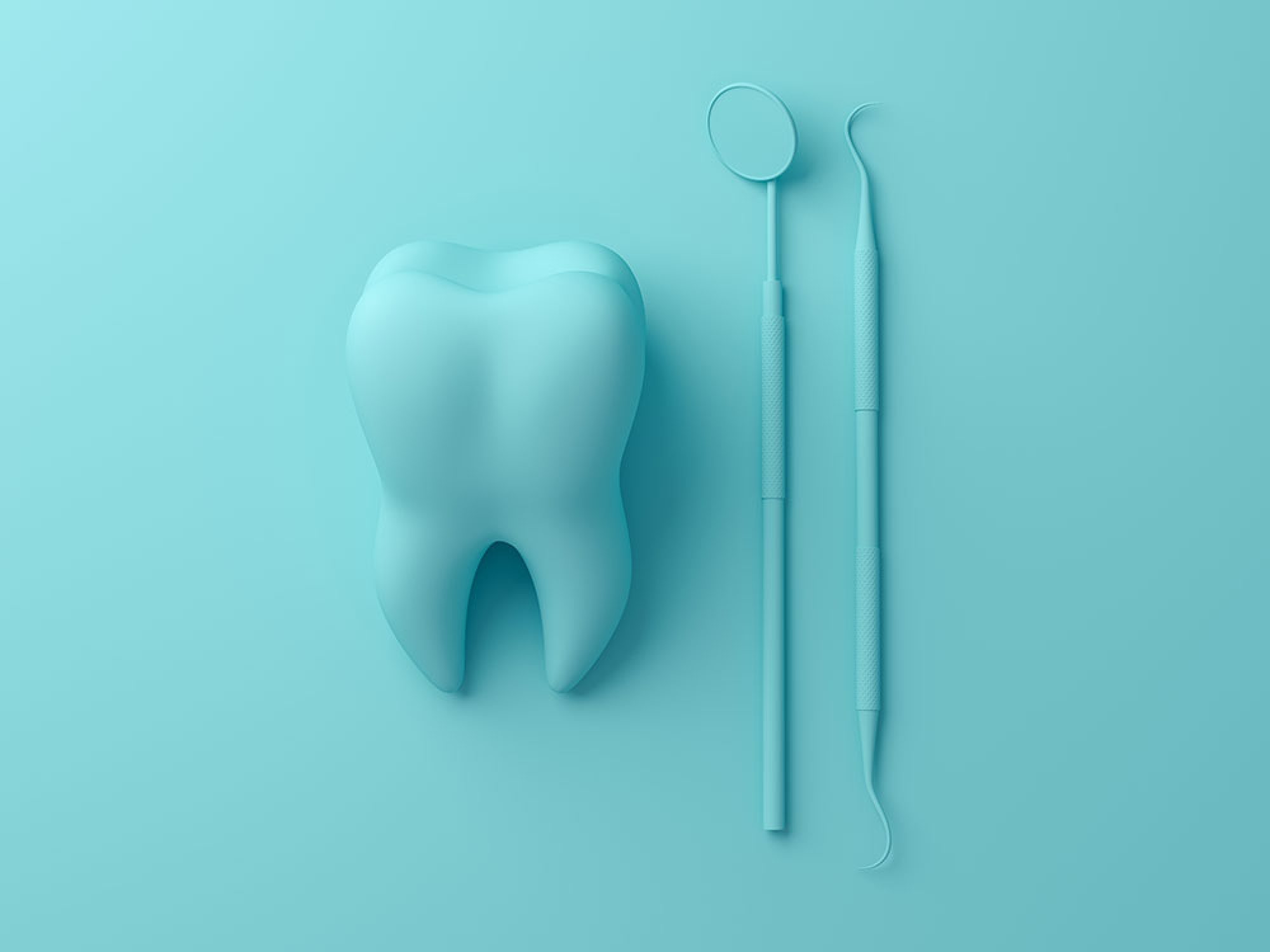Patient profile:
Ms. O. M is 83 years old female. Senior citizen lives in NY.
Her last prophylactic cleaning was performed in NYCCT.4 BW were exposed in 04/27/2018. Patient reported that lately she neglected her oral care because she easily gets tired and overwhelmed. She tries to brush every day once a day with electric toothbrush, but sometimes she does not. She brushes primarily in the morning or in the evening (duration 1min)
Patient made her first attempt to floss the day before coming to the clinic and was only able to floss 1 quadrant. (UR). Patient is not a fan of oral rinses as well.
Last medical examination was performed on November 6th 2018 by PCP Ellen Pearlstein.
Condition Atrial Fibrillation. Patient was diagnosed in 2015.Patient does not have Intracardiac device.
Medications:
Metoprolol 25mg 1 tab qd po, Losartan 25mg 1tab qd po
Correlation of oral health and cardiovascular disease
Nowadays we are aware of the fact that oral cavity is connected with systemic health of the entire organism and luckily this concept is being daily reinforced in our profession. People used to underestimate consequences and severity of dental infections. It has been said that no one can die from a toothache.There is vast ongoing evidence based research which confirms the opposite.
“The body contains 40 billion blood vessels, which makes it simple for harmful inflammatory byproducts to remain anywhere inside arteries, feeding the heart and brain. An underlying inflammatory response may place an individual at high risk for both periodontal disease and atherosclerosis”
“The role of infections has been discussed for many years. Recently, evidence has shown that certain common oral infections play a significant role in ATH. Atherosclerosis can occur in large and medium size elastic and muscular arteries. They can lead to ischemic lesions of brain, heart or extremities and can result in thrombosis and infarction of affected vessels, leading to death” “Streptococcus sanguis and Porphyromona gingivalis have been shown to induce platelet aggregation and activation through the expression of collagen-like platelet aggregation-associated proteins. The aggregated proteins may play a role in atheroma formation and thromboembolic events”
Patients with asymptomatic AF can generally undergo invasive dental hygiene procedures and minor dental surgery in a general practice setting.”
According to new guidelines they don’t need to be premedicated.
Summary of clinical findings:
Extraoral: WNL
Intraoral: fissured tongue with exophytic fibromas
exostosis of the mandibular alveolar ridge
Xerostomia
Class of occlusion I bilateral with slight tendency to posterior crossbite 70% overbite, severe crowding of mandibular anterior teeth
Dental: gold onlay restorations #2,#3,#4, #14,#15
 PFM crowns with RCT’s: #5, #8, #9 #13,#20,: emax crown #12
PFM crowns with RCT’s: #5, #8, #9 #13,#20,: emax crown #12
Class 2 and 3 amalgams #18 ,#30, #31.
Generalized micro fractures of enamel and severe attrition
Deposits: Generalized moderate supra/subgingival calculus

Before debridement:

After debridment
Dental Hygiene Diagnosis
Patient is at a high risk for caries due to multiple risk factors and risk indicators(medications that reduce salivary flow, incipient lesion visually evident #14 B, visible plaque,unusual tooth morphology, interproximal restorations, exposed root surfaces) and minimal protective factors.
Type II Generalized Active Periodontitis due to generalized 4-5 mm PD, moderate BOP and radiographic evidence of slight bone loss less than 30%
Oral Hygiene Intervention Strategies:
Based on the findings from the patient interview regarding home care I arrived at the conclusion that I was able to interest her by offering proxy brushes and soft picks. Even though she was able to do it only once I still believe that she can do more for subsequent visits. When I asked her if she did only one tooth or the entire mouth, she replied that she did entire mouth. This gives me hopes that this strategy of home care intervention is very likely succeed. Another evidence for this claim is that her plaque score improved to 1.3 Fair. To retain the results I reinforced proxybrush application techniques one more time for the patient. She brought her electric toothbrush from home and demonstrated me her brushing technique. I observed the patient for few minutes and noticed that patient is rushing through every tooth and does not allow enough time for the brush head to produce motions . Recommended the patient to count in her head until 3 and only after that switch to the next tooth.
References:
1.Oral Systemic Health FAQ | Connecting Medicine & Dentistry. (n.d.). Retrieved from https://aaosh.org/resources/oral-systemic-faq
2. Seidel-Bittke, D. (2004, December 1). The Link Between Oral Health and Systemic Health: A Review. Retrieved from http://www.dentistrytoday.com/hygiene/1225
3.Dhadse, P., & Gattani, D. (2010, July/August). The link between periodontal disease and cardiovascular disease: How far we have come in last two decades ? Retrieved November 27, 2018, from https://www.ncbi.nlm.nih.gov/pmc/articles/PMC3100856/



